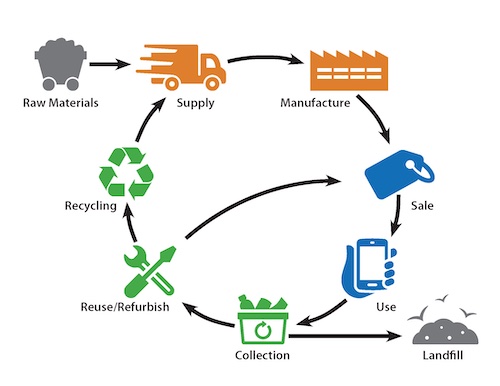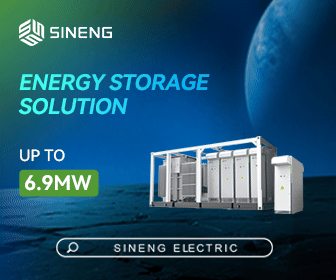Stop Landfilling Batteries (Part 2): How to reduce battery waste to near-zero
Our transition to clean energy storage shouldn’t always start by digging a hole in the ground – and batteries should never end in a landfill.
In Part One, we looked at battery waste reduction, from effective recycling programs and promising technologies, to closing the Recycling Gap.
Today, we’ll head upstream to where a battery’s waste footprint starts: design, raw materials, energy usage, and manufacturing. And you’ll see how some manufacturers minimize waste at every stage.
You’ll also discover the essentials to compare batteries to help slash your supply chain footprint and battery bill.
First, why reduce battery waste?
Electrification is critical to turn the tide on climate change and build a more sustainable economy. As the world embraces renewable energy, including solar, wind, and hydroelectric power, reliable storage becomes a critical buffer between fluctuations in supply and demand.
Less battery waste = less mining. This ensures more resilient supply chains, vibrant ecosystems, and ample raw materials for future generations.
Less waste protects our drinking water, soil, and air.
And less waste saves money: Efficient processes and materials insulate you from rising raw material prices; if wasted materials and wasteful processes are a bottom-line expense for manufacturers, it’s clear who pays the final bill.

Any time you buy batteries, you’re voting with your wallet
Broadly speaking, there are two types of manufacturing:
- Open-loop manufacturing starts by mining raw materials from the earth, and ends with throwing out a used-up product. In the long term, it’s like trying to save money when there’s a hole in your pocket.
- Closed-loop (or “cradle-to-cradle”) manufacturing minimizes waste, and lets us reuse resources indefinitely.
Where do near-zero-waste batteries come from – and how do responsible manufacturers make them?
Start here: Reuse recycled materials wherever possible
Batteries have an environmental impact at every production stage, from raw materials and conversion, to transportation, scrap (material not in the final product), and recycling. Responsible battery manufacturers source recycled materials to decrease embodied energy and keep hazardous waste out of landfills. For instance, lead-acid and absorbent gel mat (AGM) batteries are 99 percent recyclable — and made using roughly 80 percent recycled materials. This closed-loop minimizes mining and lowers production, retail, and societal costs.
Engineer waste out of the loop with resource-flow analysis
Twenty-first-century engineering considers a battery’s entire lifecycle, including reuse.
Key steps include:
- Design for longer life and improved reliability in harsh operating conditions
- Optimize process efficiency
- Eliminate or decrease scrap
- Involve employees in waste reduction, including incentive programs
- Maximize recovery and recycling systems
- Recycle water and on-site materials
Finally, engineers can design batteries for easy assembly, repair, and disassembly at end of life.
Energy-efficient manufacturing reduces embodied carbon and protects you from energy price increases.
Battery production requires a lot of energy, and much of its environmental impact comes from powering heavy machinery. Companies that monitor their energy use, and invest in energy-saving equipment, reduce their energy requirements. Charging alone can comprise 70 percent of a manufacturer’s electrical demands. Investing in an ultra-efficient battery formation system saved one company close to 5,000,000 kWh in 2020. And, because the new system precisely controls battery temperature, it improves battery performance and longevity.
Build renewable energy batteries with renewable energy
Companies should manufacture batteries using renewable energy (or fission power) to make them more sustainable. The more energy supplied through clean sources, the fewer fossil fuels need to be extracted and burned. Renewable energy reduces our reliance on non-renewable sources, mitigates climate change, decreases upstream waste, and creates good jobs.
Build batteries with waste-reducing processes
- R&D includes CAD modeling, 3D printing, and extensive field testing. These enable engineers to solve common battery problems faster, and improve lifespan.
- More energy-storing “active material” + thicker metal lattices (grids) to hold it = more chemical reactions = longer life.
- Automation optimizes dozens of variables when mixing energy-storing paste, activating energy-holding chemicals during curing, and charging batteries during formation.
- Robotic assembly improves reliability and reduces waste. For example, Cast-on-Strap welding allows 3,940 more adjustments than manual welding – and eliminates partial welds.
- Quality assurance reduces manufacturing scrap – and prevents common failure modes Battery companies with extensive quality controls are more likely to catch mistakes early. Not only does this reduce manufacturing scrap, but it ensures batteries last longer before recycling.
Reputable manufacturers highlight their quality control procedures, including aerospace vision systems (robotic “eyes” that inspect critical parts), automated testing, and trained technicians with extensive checklists.
What’s next for Zero-Waste?
Support programs to end unregulated battery recycling and artisanal mining
In countries like the USA, strong regulations and responsible manufacturers protect workers and the environment:
- Manufacturing occurs in heavily-regulated facilities, with extensive safety training, and not in outsourced plants with lax laws or forced labor.
- Personal protective equipment like P-100 negative respirators guards against workplace hazards.
- A full-time, onsite registered nurse (RN) helps employees.
- Safety equipment and air/water filtration meet or exceed the latest federal, state, and local standards.
In contrast, mining and recycling are unregulated in some developing regions where there is a lack of proper safety oversight, equipment, and protocols. This leads to dangerous working environments, pollution, and community harm. Conscientious manufacturers and industry groups work with nongovernmental organizations (NGOs) and governments to demand an end to unsafe practices – and ensure equal access to modern equipment and safety measures.

Close the Recycling Gap – and push for universal battery recycling
To recap, lithium-ion batteries are collected 5 percent of the time – versus roughly 99 percent recycling for lead-acid and AGM batteries.
To close the Recycling Gap, the battery industry and government must:
- Support comprehensive policies and legislation for full recycling for all battery chemistries
- Create a robust collection infrastructure
- Invest heavily in recycling advances for emerging battery chemistries that are currently thrown out
- Ban landfilling
Together, these steps will improve batteries' environmental, economic, and social benefits. And they’ll increase our energy security.
Finally, you can choose low-waste batteries now from companies that preserve our resources.
The tips above will help ensure your batteries last longer before recycling – and drastically reduce waste.
 John Connell is a 30-year energy storage veteran and Vice President of the SLI Products Group at Crown Battery Manufacturing. Founded in 1926, Crown manufactures 99% recyclable batteries using 100% renewable energy in a first that earned its place on the U.S. EPA’s Green Power Partner list. All Crown batteries are US-Engineered and manufactured at the company’s ISO 9001:2015-certified plant in Fremont, Ohio.
John Connell is a 30-year energy storage veteran and Vice President of the SLI Products Group at Crown Battery Manufacturing. Founded in 1926, Crown manufactures 99% recyclable batteries using 100% renewable energy in a first that earned its place on the U.S. EPA’s Green Power Partner list. All Crown batteries are US-Engineered and manufactured at the company’s ISO 9001:2015-certified plant in Fremont, Ohio.
Crown Battery | www.crownbattery.com
Author: John Connell
Volume: 2023 May/June









